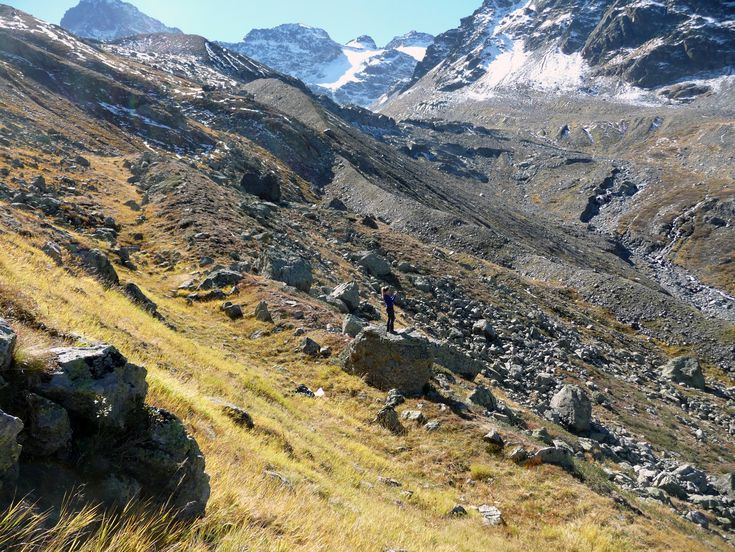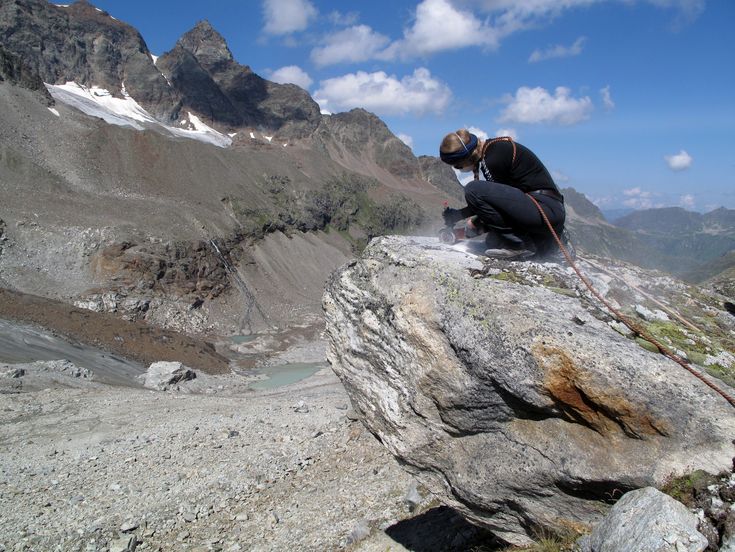Mountain Glacier Sensitivity in the Eastern Alps. Response of glacierized areas to climate change in the past and present and implications for the future.
SUPERVISOR: Markus FIEBIG
PROJECT ASSIGNED TO: Sandra BRAUMANN Mountain glaciers are prominent elements of Alpine regions rapidly reacting to climate variations. They respond sensitively to climate oscillations on a variety of time-scales, ranging from seasonal and annual to multi-millennial. Fluctuating glacial ice shaped the Alpine landscape and left geomorphological imprints recording temporal and spatial information regarding past glacier culminations. The identification and interpretation of geomorphological features associated with glacier dynamics have improved our understanding of climate patterns in glacial and periglacial regions fundamentally. Recent advancements in cosmogenic nuclide dating in combination with innovative mapping strategies now provide powerful tools to put numerical constraints on glacier dynamics during the Late Holocene and allow for establishing robust glacier chronologies spanning the past 11,700 yrs. The core of the Ph.D. project is a cross-cutting glacier and climate study in the Silvretta range (AUT/CH), a carefully selected melt-dominated study site with pronounced moraine records as well as simple glacier geometries. The research strategy comprises:
- ground truth geomorphological mapping including the operation of an unmanned aerial vehicle (UAV) and state of the art geodata management, plus research on historical documents, instrumental time series and complementary climate records.
- the collection of new geochronological data reflecting Holocene climate variations.
High-precision 10Be surface exposure dating of multiple moraine sequences found in the study area will clarify patterns of climate variations during the Holocene. Preexisting radiocarbon and tree-ring data of the region - being valuable complementary records - are evaluated and potentially extended. - the application of a glacier model for the Silvretta catchment, which is used to reconstruct glacier fluctuations based on overlapping geochronological and instrumental records, and which builds a framework to estimate the magnitude of future glacier change considering climate trends projected for the 21st century.
With the paleoclimatological component, the study makes a contribution to the debate on variability of glacier oscillations on a regional and Alpine scale, thereby also addressing the unanswered question of driving mechanisms for climate fluctuations in the study area. A robust glacier model of selected areas at the Silvretta provides an estimate of glacier parameters (e.g. meltwater flux, front variations, equilibrium line altitude) quantifying future effects of climate change relevant to ecology, economy and society in Alpine regions. The Ph.D. project, centered at the University of Life Sciences and Natural Resources (BOKU), Vienna (AUT), is realized in collaboration with Columbia University, New York (USA), the University of Utah, Salt Lake City (USA) and the Geological Survey of Austria, Vienna (AUT). Inatura Erlebnis Naturschau GmbH at Dornbirn generously sponsors the project in coordination with the provincial government (Amt der Vorarlberger Landesregierung, AbT. IVe). Sandra Braumann is the recipient of a DOC scholarship provided by the Austrian Academy of Sciences (ÖAW).

Figure 1:
Moraine sequence at Laraintal indicating former ice margin positions; today’s glacier extent is limited to the area in the background. Mapping and dating of moraines allow the reconstruction of glacier fluctuations over the past millennia. Resulting spatial and age information on glacial deposits is used to model future glacier change in the catchment.

Figure 2:
Collecting rock samples for 10Be surface exposure dating at Ochsental in order to put time constraints on the sampled ice margin.
